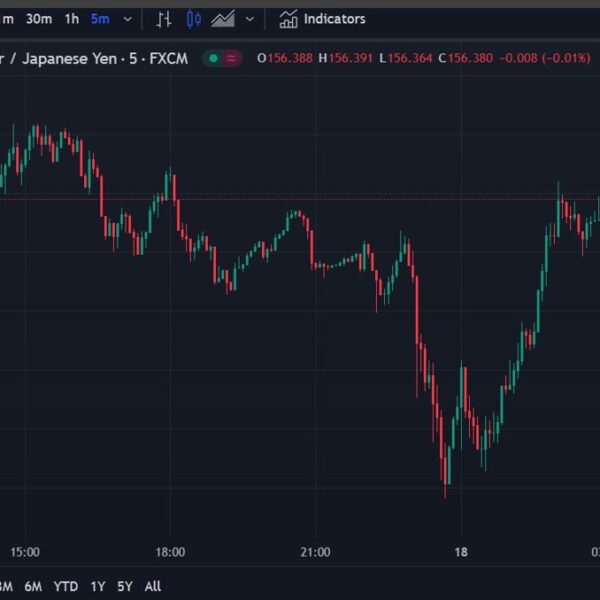A lifeguard works at the beach at Coney Island on June 15, 2023 in the Brooklyn borough of New York City.
Spencer Platt | Getty Images
Dailey Jogan was pleased to learn she would get $15 an hour and a handful of perks as the head swim coach for a metro Detroit team. Her older brother’s reaction looked more like surprise.
At 18 years old, Jogan has spent the summer organizing meets as staff leader of the 250-person team. She also gets some freebies for facilities housed within the park where they practice, like access to the gym and a few comped tickets to the movie theater.
That $15 per hour wage is about 25%, or $3 per hour, more than her older brother earned in the same role five years ago. And if he wanted to use the workout equipment or catch a film, he had to dig into his wallet to pay like everyone else.
“I was very pleasantly surprised,” Dailey Jogan said. “I feel very valued.”
That change in pay and benefits underscores the changing job outlook for the millions of American teen workers following the pandemic-induced labor crunch. While other Covid-related shocks to the economy have dissipated in recent years, young employees fetching higher wages and additional incentives appears to be a new normal.
Data from Gusto, a payroll platform serving more than 300,000 businesses across the country, shows just how much ground teens have gained. The typical wage for a newly hired worker ages 15 through 19 came in at $15.68 per hour in June, up more than 36% from the start of 2019.
That outpaces the rate of growth for all workers regardless of age on private payrolls, which has climbed just under 27% over the same time period, according to federal data. What’s more, Gusto stats show teens have been uniquely insulated from shifts in broader economic conditions that have at times led to lower pay for some adults.
“I could probably overstate the benefit to teens in this labor market, but, I mean, I would have to go pretty far to do it,” said Liz Wilke, Gusto’s principal economist. “It’s a much better time to be a teen entering the labor force today than it was five or 10 years ago.”
Employers woo workers
Beyond pay, businesses courting teens have added additional benefits — like Jogan’s gym and theater access — to sweeten the offer.
At fast-casual chain Chipotle Mexican Grill, workers have been eligible for a tuition reimbursement program since before the pandemic. Earlier this year, the California-based company added a well-being offering, which includes six free sessions with a licensed counselor or mental health coach. Chipotle also launched a match program, where eligible employees who make payments on student loans will get up to 4% of pay from the company in their retirement account.
Additions to Chipotle’s benefits package in recent years have come after surveying its U.S. restaurant workers — more than one-third of whom are teens. While these offerings can push up operating costs, head of global benefits Daniel Banks said they are worthwhile to get enough new hires and open more stores. It can also boost worker retention, in turn keeping existing locations operating smoothly.
Workers fill food orders at a Chipotle restaurant on April 01, 2024 in San Rafael, California.
Justin Sullivan | Getty Images
In fact, Chipotle found employees in its education-assistance program were two times more likely to stay and more than six times as likely to move into management roles. Banks also said Chipotle’s turnover rates are near record lows.
“Our culture and brand is so important to us. We really try to focus on internal promotions and internal hires,” he said. “Being able to provide those individuals with the right skills and tools to become an effective leader just helps the bottom line across the board.”
Elsewhere, small businesses are trying to keep up.
Nearly half of Erin Powell’s staffers at The Sugar Shack, a small business in Minnesota, are teens, taking on roles like making coffee or baking pizzas. Powell accommodates vacation schedules, gives free menu items during shifts and offers frequent raises. She also hosts holiday parties and tries to foster a familial workplace atmosphere.
Despite those efforts, she’s at times seen teen employees leave for higher pay at chain rivals like Starbucks. Powell feels caught between a rock and a hard place: She’s trying to do right by her young workers, while also acknowledging the financial realities of what can be provided without scale.
“Everybody’s competing for workers still,” Powell said. But, she tries to show employees that “sometimes big isn’t always better.”
To keep increasing labor costs manageable, she takes on the responsibilities of what others would hire a manager for. Powell has also tried to curtail waste within the business to cut out unnecessary expenses.
‘The summer job is back’
Whether it’s a raise or financial support for education, these boons appear to be luring teens to the workforce. It marks a turn for a group that saw big declines on this front in recent decades.
At its peak this year, government data shows close to 40% of members of this age group are employed. That’s the largest share since 2009, but is still well off highs recorded in the late 1970s.
“The summer job is back,” said Alicia Sasser Modestino, an associate professor of economics who studies youth development at Northeastern University. “I remember being completely dead wrong in summer of 2021 when I said, ‘Teenagers: just run out, grab these jobs, because this is not going to last.'”
For reference, the federal government found more than 5 million teens were in the workforce last year. Gusto expects sports and recreation; education; and food and beverage to be popular summer job sectors for this age bracket.
Teens have also begun appearing with higher frequency in less stereotypical sectors, like construction and nonprofit work, as the labor force remains tight, according to Gusto’s Wilke. Looking ahead, she said teens should be able to keep finding these perks and opportunities as long as the job market is relatively hot.
A shrinking share of teen workers is making minimum wage, which was once considered common. Just about 3% of 16- to 19-year-old hourly workers earned equal to, or less than, the federal minimum wage last year, according to government data. That’s down from close to 20% in 2013. (The federal per-hour pay floor has sat at $7.25 since 2009, though several states have their own minimums that are higher than that.)
Because teens typically start at the lowest end of a company’s pay scale, Wilke said it can be easier to institute pay bumps that equate to large percentage changes than for higher-earning, older colleagues. And businesses may be more likely to give outsized wage gains to younger workers, she said, because they often don’t require other parts of a compensation package like insurance.
Recognizing ‘a balance’
While today’s employed teens are theoretically flush with spending money, there’s an elephant in the room: the rising cost of higher education. Olivia Locarno said she’s stashed money from jobs at Chick-fil-A and Starbucks in a savings account for books and dorm room essentials.
The 18-year-old New Jersey resident still treats herself to meals out with friends and new clothes every once in a while. But she said she has tried to resist discretionary spending because of the expenses from starting classes at Marist College in the fall.
“It’s hard to just go on Amazon and not spend money on things,” she said.
YinYang | E+ | Getty Images
Jogan, too, is saving up her paychecks from coaching for expenses while at Aquinas College in Michigan, where she’ll be a member of the swim team. She’s also starting to think about big-ticket purchases down the road like a car.
For Jogan, leading the so-called Mutants team has taught her soft skills like communication and problem solving. That’s similar to what her older brother, Thomas, said he learned from the gig and uses today in his supply chain management job.
Thomas said he would’ve liked to have been paid at the rate his sister enjoyed when he was her age. But he added that Dailey does need to stretch the extra dollars she is making to account for inflation. Thomas said there’s no sibling jealousy — he’s just happy to see her carrying on a family legacy in a meaningful job.
“She should be in a good spot,” said Thomas, 24. “Obviously, things are more expensive now and so forth, so there’s a balance.”















